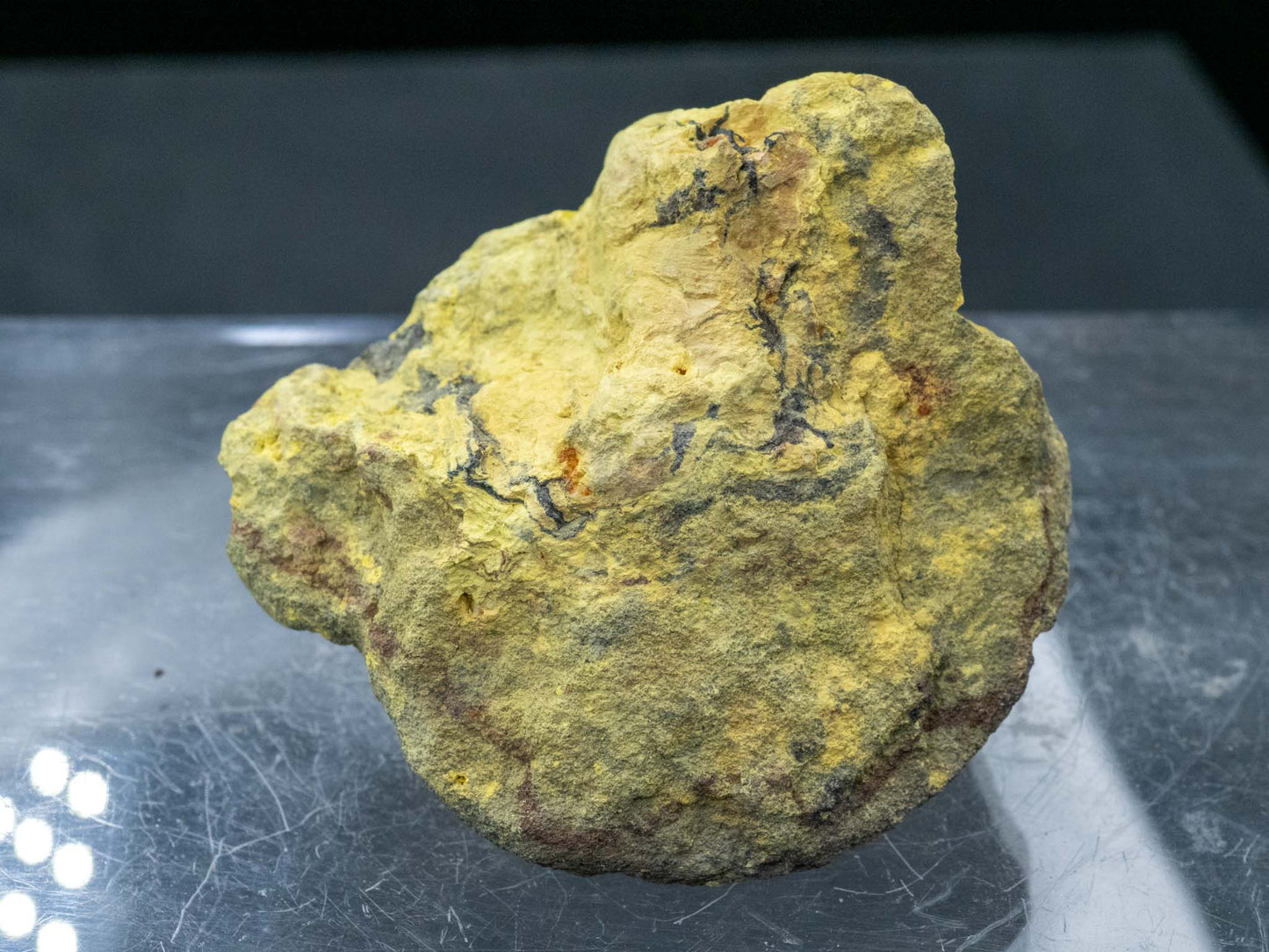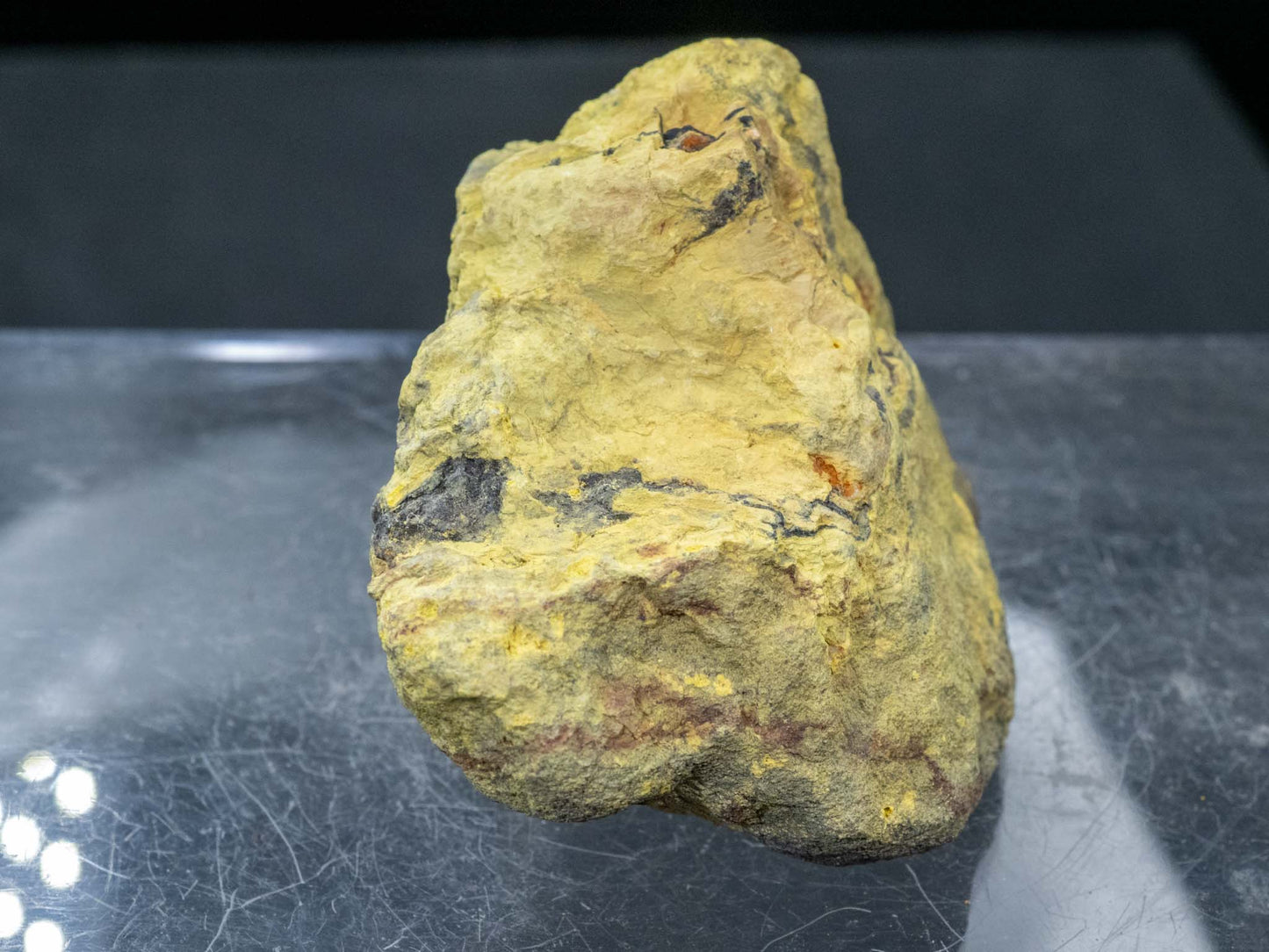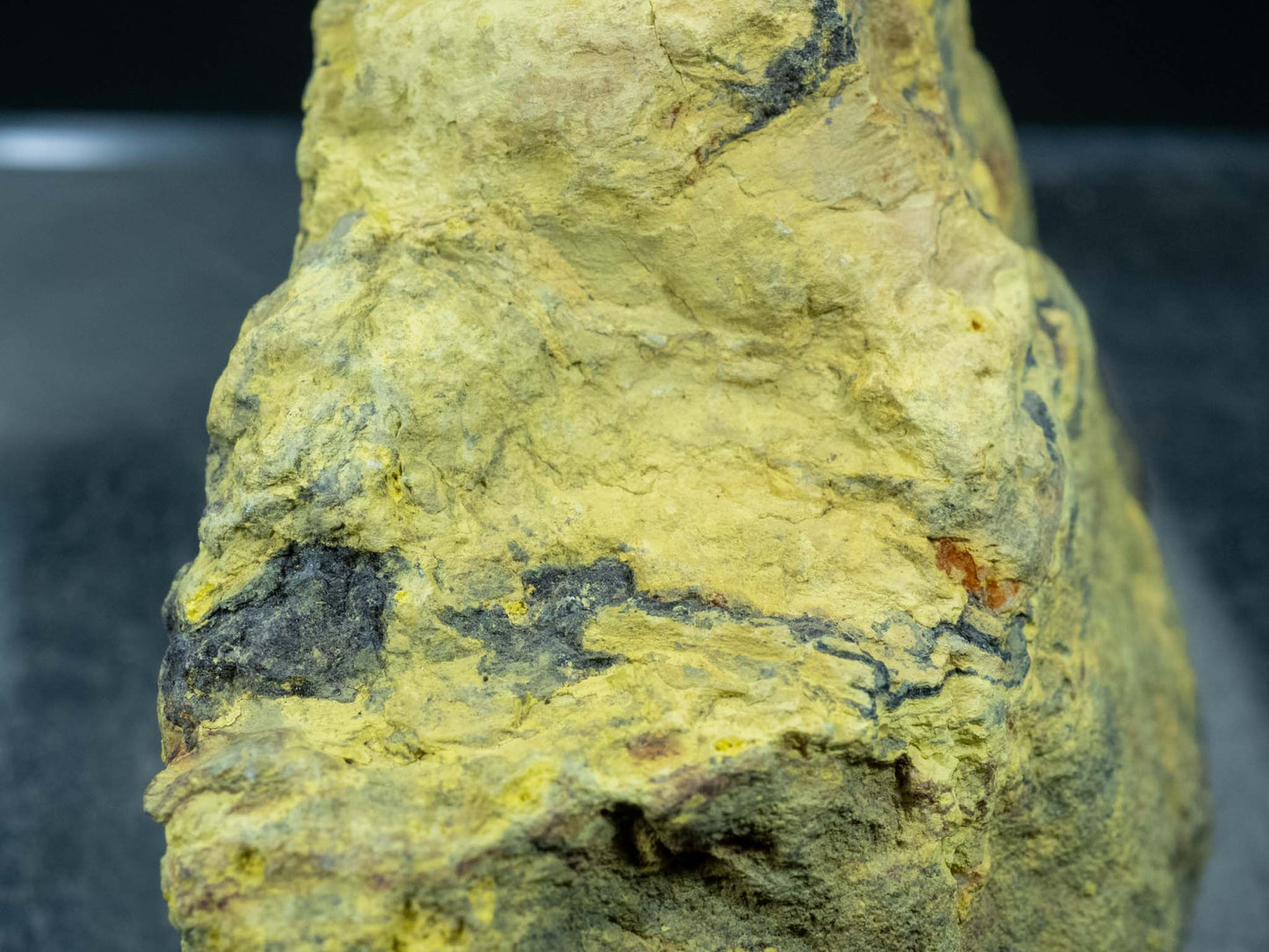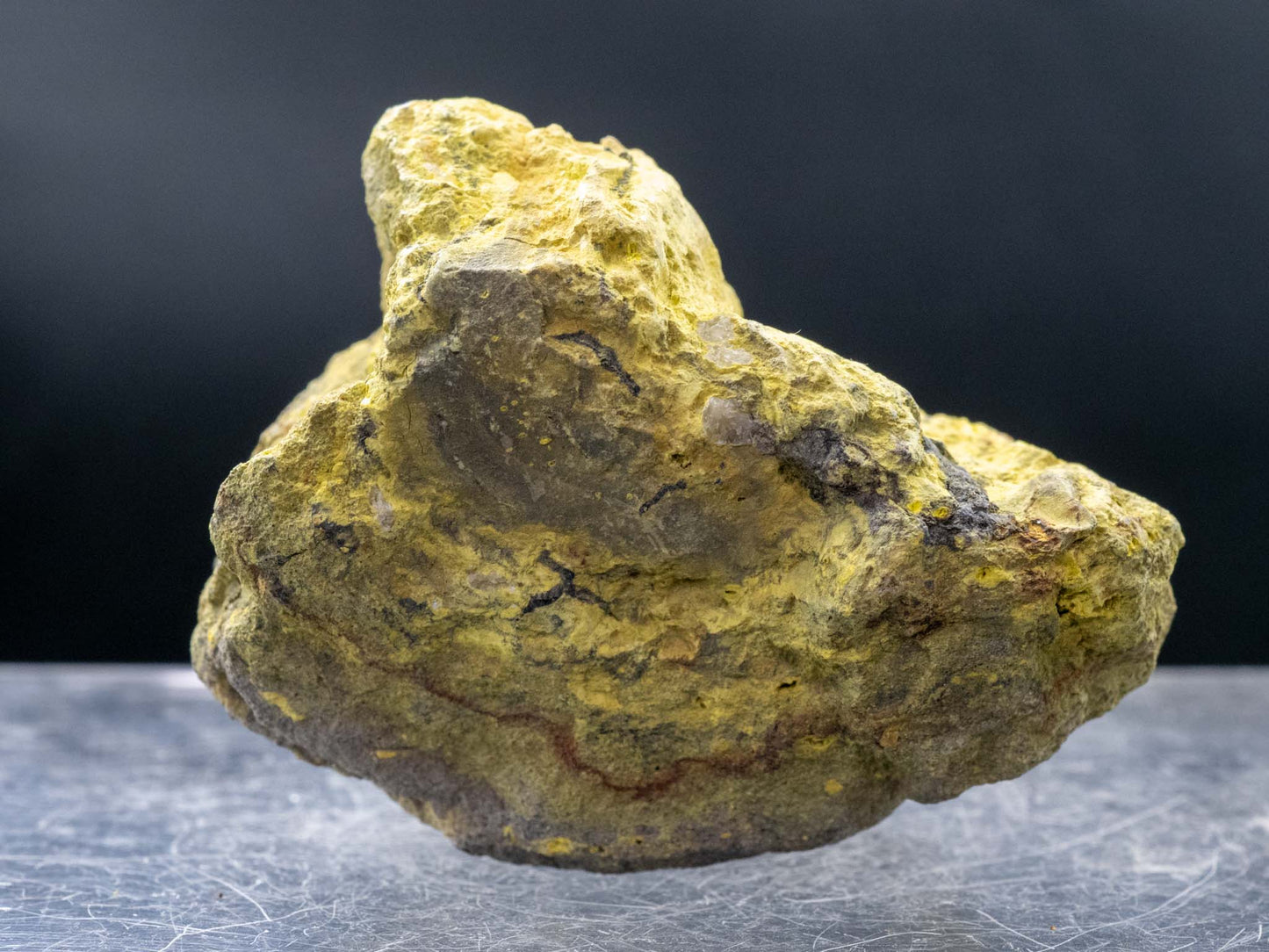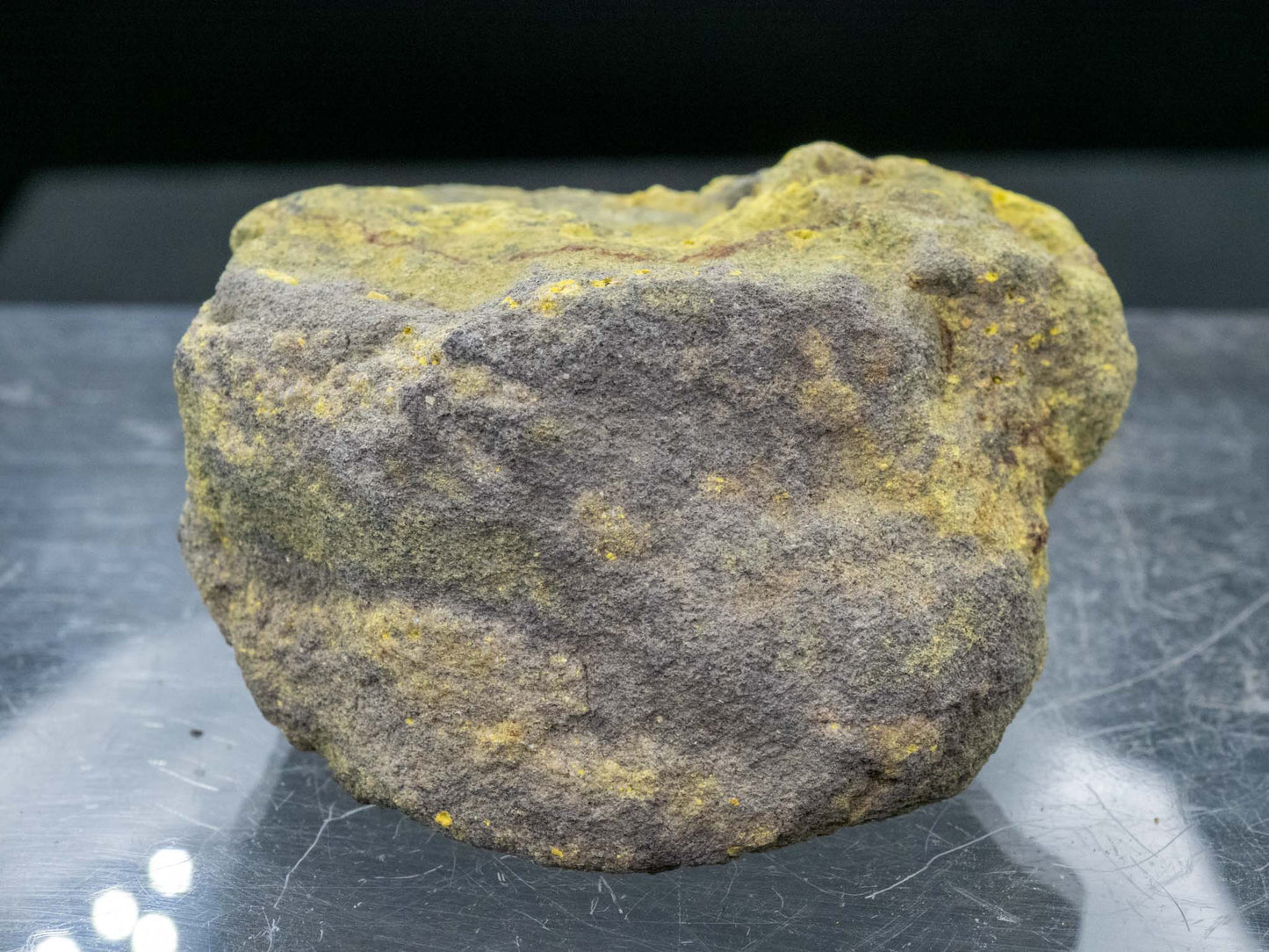Rad Man Minerals
Uraninite & Carnotite - San Juan County, Utah (ex. Jack Nieburger Col.)
Uraninite & Carnotite - San Juan County, Utah (ex. Jack Nieburger Col.)
Couldn't load pickup availability
 UO2 K2(UO2)2(VO4)2 · 3H2O
UO2 K2(UO2)2(VO4)2 · 3H2O
Uraninite and carnotite are two uranium-bearing minerals commonly found in the sandstone-hosted deposits of San Juan County, Utah, an area renowned for its rich uranium ore bodies. Uraninite, also known as pitchblende, is a dense, black, radioactive mineral composed primarily of uranium dioxide (UO₂). It occurs as small, granular masses or disseminated grains within the sandstones, often associated with organic material that helped concentrate uranium from circulating groundwater. Carnotite, by contrast, is a vivid yellow secondary uranium-vanadium mineral that forms in the oxidized zones of these deposits. It occurs as encrustations or powdery coatings lining fractures and bedding planes, providing a stark visual contrast against the host rock.
These two minerals represent different stages of uranium mineralization in San Juan County. Uraninite forms in reducing conditions, often deep within the sandstone layers, while carnotite forms in near-surface oxidizing environments where uranium and vanadium are remobilized and reprecipitated. During the uranium boom of the mid-20th century, the deposits in this region were heavily mined to supply ore for nuclear energy and weapons programs. Today, uraninite and carnotite specimens from San Juan County are highly sought after by collectors, not only for their historical significance but also for their striking appearance and importance in understanding the geochemical processes that created these unique deposits.
Approx. specimen size: 60mm x 40mm x 30mm
Approx. activity on an SE International Ranger EXP: 150 000 cpm
